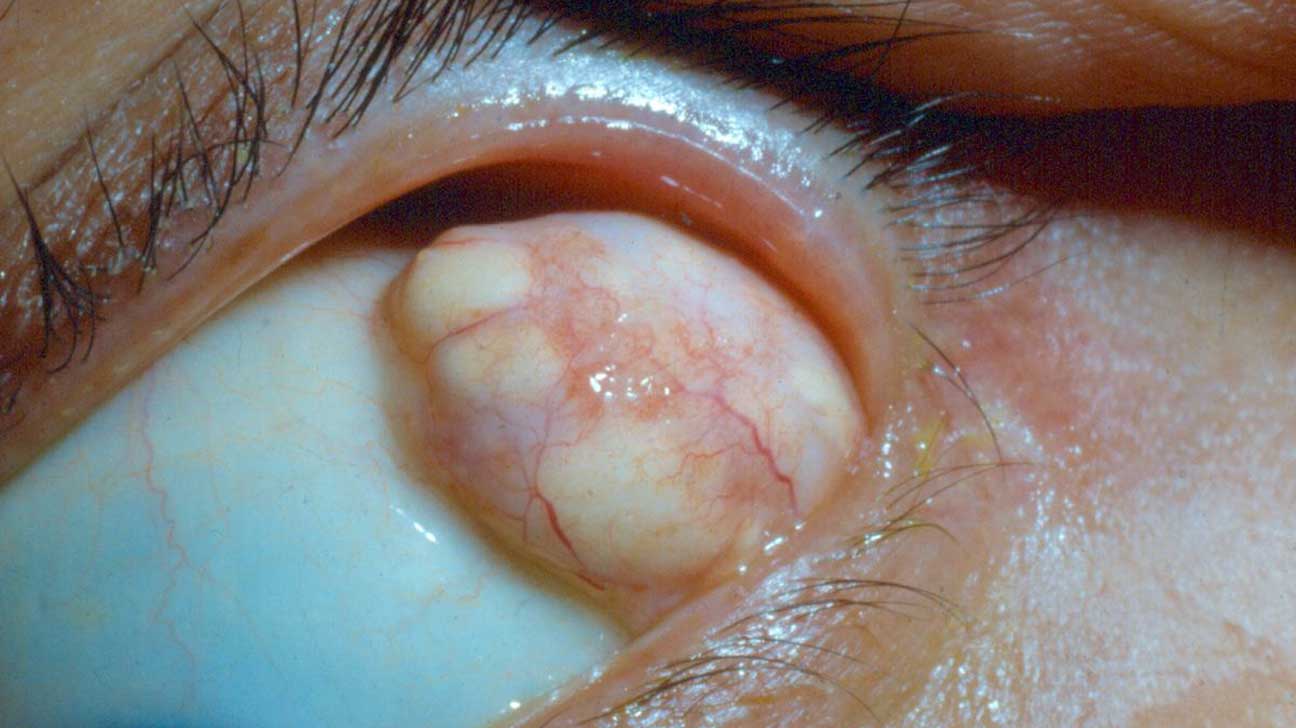
A dermoid cyst is an enclosed sac near the surface of the skin that forms during a baby’s development in the uterus. The cyst can form anywhere in the body. It may contain hair follicles, skin tissue, and glands that produce sweat and skin oil. The glands continue to produce these substances, causing the cyst to grow. Dermoid cysts are common. They’re usually harmless, but they need surgery to remove them. They don’t resolve on their own. Dermoid cysts are a congenital condition. This means they’re present at birth.
These rarer dermoid cysts occur in four major areas:
Many dermoid cysts have no obvious symptoms. In some of these cases, symptoms develop only after the cyst has become infected or has grown significantly. When symptoms are present, they may include the following:
Periorbital dermoid cyst
Cysts near the surface of the skin can swell. This may feel uncomfortable. The skin may have a yellowish tint. An infected cyst can become very red and swollen. If the cyst bursts, it can spread the infection. The area around the eye may get very inflamed if the cyst is on the face.
Ovarian dermoid cyst
If the cyst has grown large enough, you may feel some pain in your pelvic area near the side with the cyst. This pain may be more pronounced around the time of your menstrual cycle.
Spinal dermoid cyst
Symptoms of a spinal dermoid cyst usually begin once the cyst has grown large enough that it starts to compress the spinal cord or the nerves in the spine.
Many dermoid cysts have no obvious symptoms. In some of these cases, symptoms develop only after the cyst has become infected or has grown significantly
Diagnosing a periorbital dermoid cyst or a similar cyst near the skin’s surface in the neck or chest can usually be done with a physical exam. Your doctor may be able to move the cyst under the skin and get a good sense of its size and shape.
The imaging tests your doctor may use include:

Copyright © 2022 Dr. Sandhya Bade | All Rights Reserved | Created & Crafted By Itorix Infotech
WhatsApp us